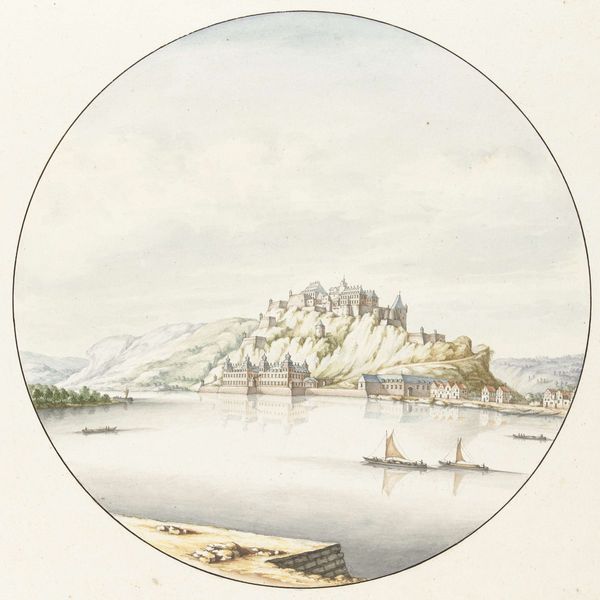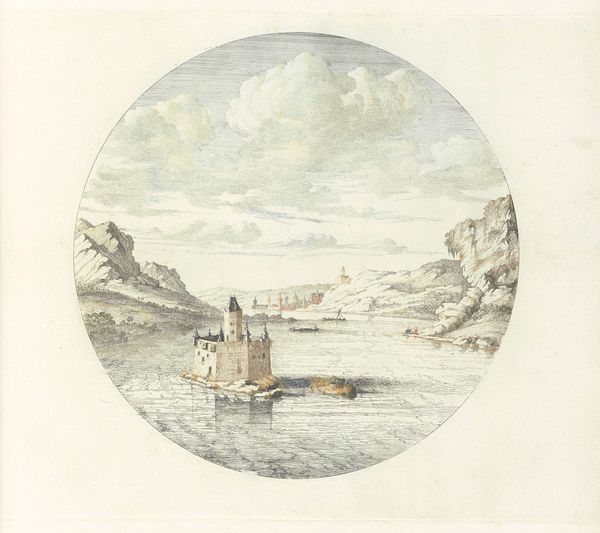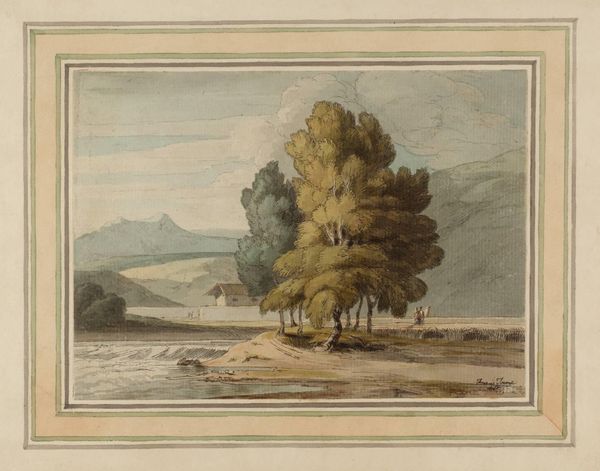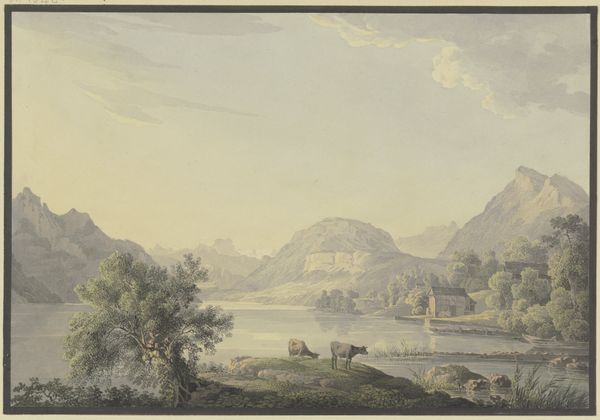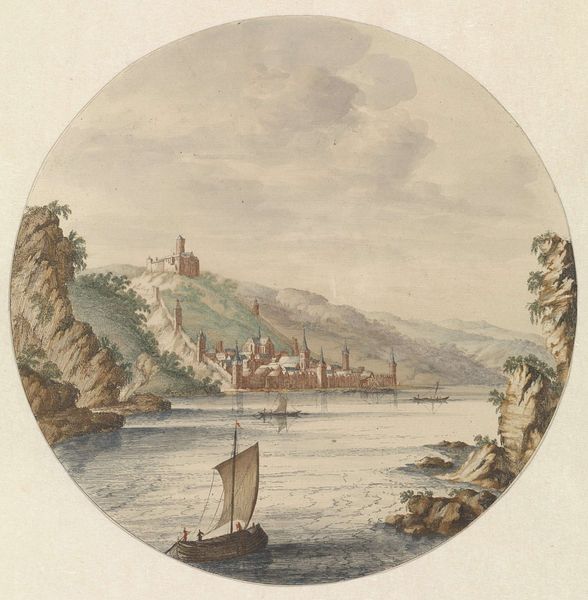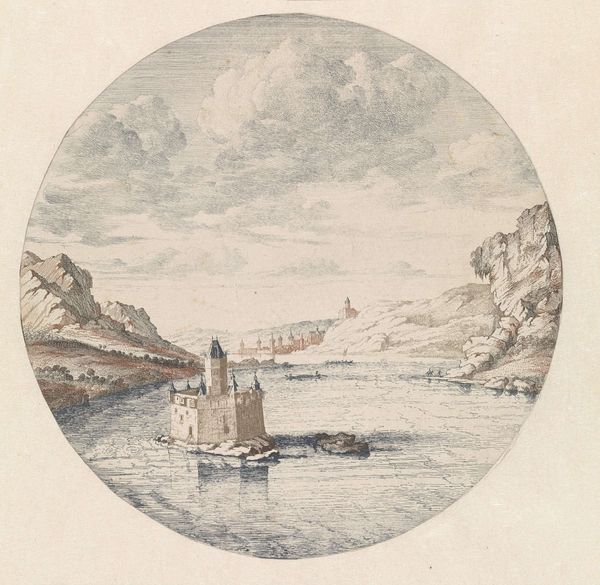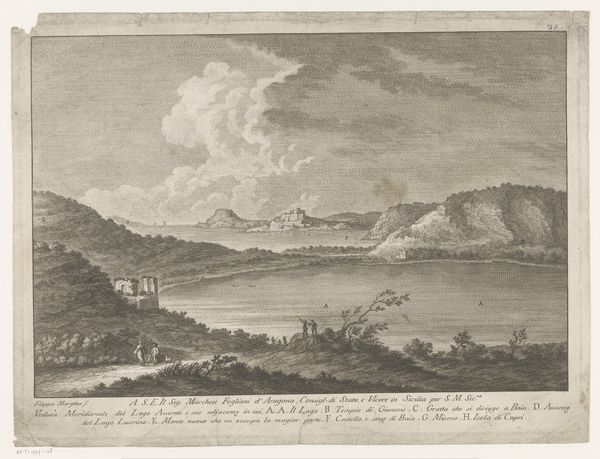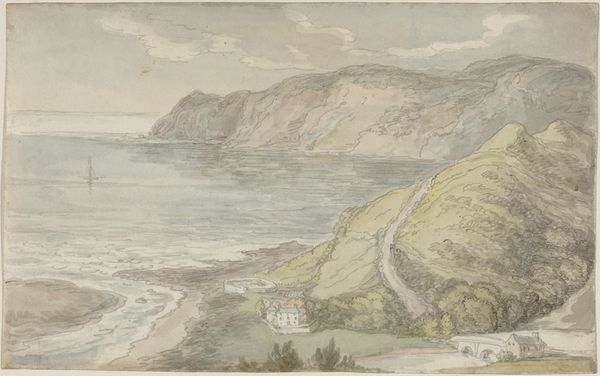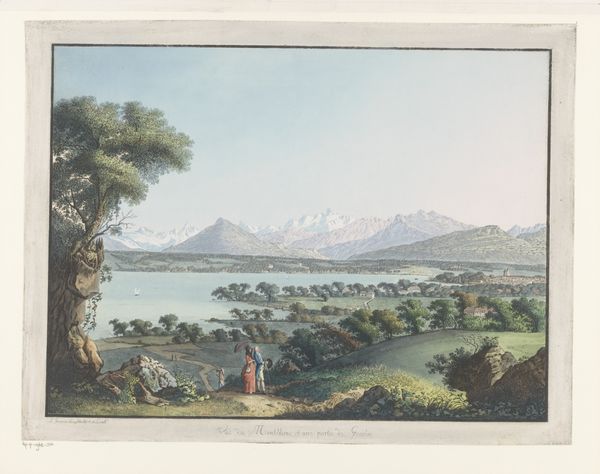
drawing, watercolor
#
drawing
#
dutch-golden-age
#
landscape
#
watercolor
#
pencil drawing
#
coloured pencil
#
watercolour illustration
#
genre-painting
#
watercolor
#
realism
Dimensions: diameter 272 mm, height 342 mm, width 397 mm
Copyright: Rijks Museum: Open Domain
Editor: This is *View of the Rhine at Hammerstein* by Jan van Call, made sometime between 1666 and 1706. It’s a watercolour drawing and I’m struck by how calm and ordered it feels, like a carefully composed memory. What do you see in this piece? Curator: The placid river and meticulously rendered town speak to a powerful desire for order amidst constant change, a recurring theme throughout history. Consider the circular format itself; does it evoke a protective lens, shielding the viewer from a world perceived as chaotic? The river acts as a pathway, not just geographically but also perhaps psychologically, linking the known and the unknown. How does this reading resonate with you? Editor: I see what you mean. It's less about capturing the real view and more about a particular way of seeing, imposing a structure, both literally within the circle and symbolically through the composition. It reminds me a little bit of Claude Lorrain. Curator: Indeed. And the deliberate use of muted tones might reinforce a longing for an ideal past, a golden age subtly contrasted against the encroaching unknown of the future. Notice, too, how light defines form – an almost symbolic interplay of revelation and concealment. What elements, beyond technique, suggest this controlled viewing experience? Editor: I think it is the distance and elevation, we're not invited into that town but kept at a distance, observing from above, dictating the terms. Thank you, that's given me a new way to see this landscape! Curator: It's fascinating to observe how artists negotiate anxieties and aspirations by molding visual elements to fit culturally reinforced needs. There’s a story behind every carefully placed detail, revealing profound truths about the past and, potentially, about ourselves.
Comments
No comments
Be the first to comment and join the conversation on the ultimate creative platform.
